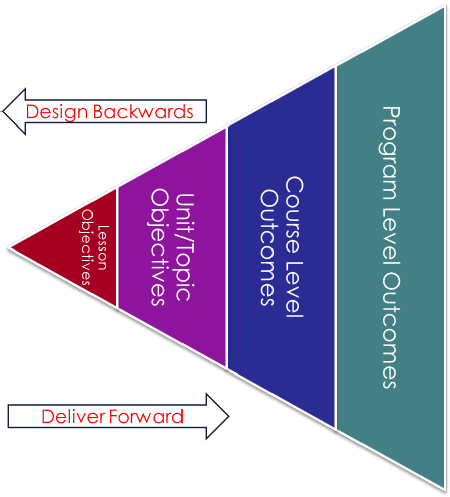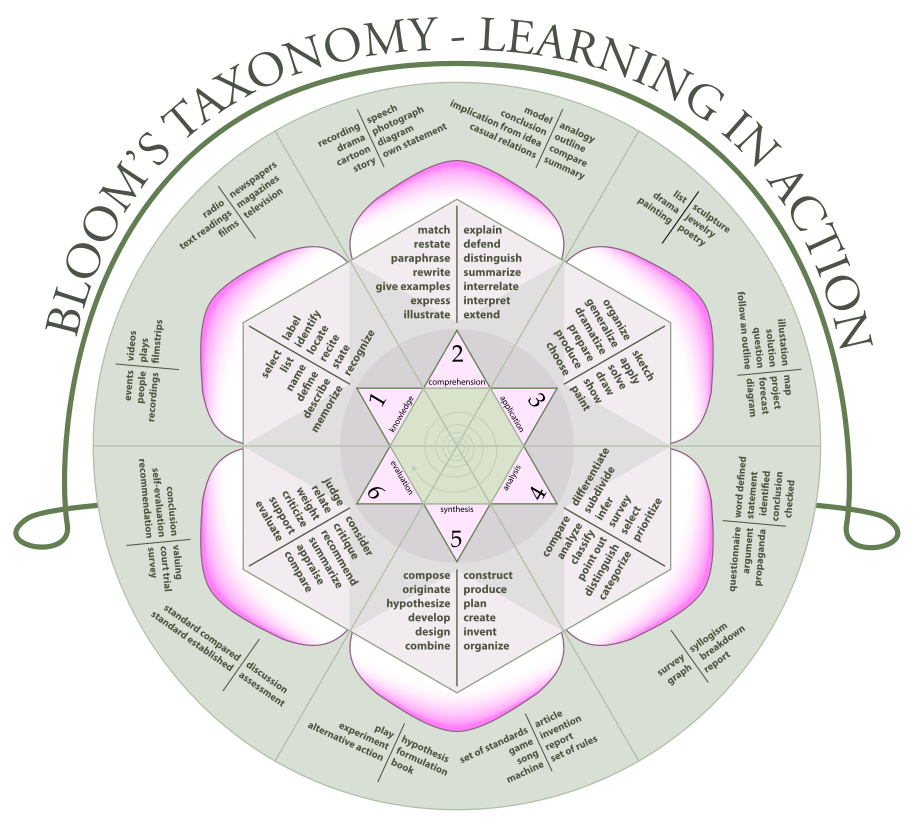 myCSUSM
myCSUSMWriting Objectives
Your course-level learning outcomes (CLOs) were determined when the course was proposed for inclusion in the program or major. These CLOs are designed to align and support the program level outcomes and point all faculty teaching the course in the same direction, while allowing each instructor to determine how these outcomes will be met.
Because CLOs are somewhat general and open to interpretation, you'll find the task of creating your course much easier if you take the time to write more specific unit or module level objectives. Well-developed objectives create a strong foundation, and support alignment between learning goals, assessment methods and learning activities.

Before developing your objectives consider these questions:
- For each of the stated course outcomes, what specific knowledge, skills or attitudes will tell you this outcome is being achieved?
- What would a skeptic need (evidence, behavior, etc.) in order to see that your students are achieving the major goals you have set out for them?
- In your experience, what evidence and behaviors tell you when a student has met these goals?
Components of Learning Objectives
Learning objectives may be broken down into 3 main components, easily recalled as the “ABC” of objectives:
- Action -A verb that identifies the performance to be demonstrated.
- The action must be observable and measurable, such as state, identify, explain, develop, design, or calculate.
- Verbs such as understand and appreciate are not observable and create vague, unmeasurable learning objectives.
- Behavior -A learning statement that specifies what learning will be demonstrated in the performance.
- Conditions - This includes any materials, tools or aids the learner will use when performing the
action, and may include the environment in which it will be performed if relevant.
- Some objectives also include a fourth component, the degree. this refers to the acceptable level of performance, For example, does the task need to be performed with 100% accuracy, or is something lower acceptable.
Blooms Taxonomy of Cognitive levels and Objectives - details the levels and provides a list of verbs describing actions associated with each level.
Examples:
Sciences
- Students create a research proposal incorporating the principles of scientific methodology.
- Students can evaluate the validity and limitations of theories and scientific claims in experimental results
- Students will be able to dissect a frog so that the following organs are clearly displayed: heart, lungs, stomach, pancreas, intestines.
Psychology
- Students can write research papers in APA style.
- Students can classify learning theorists as primarily behavioral or cognitivist.
History
- Students can list 5 major events that occurred between the colonial era and WWI.
- Students can compare and contrast the major causes of the American and Spanish Civil wars.
Computer Science
- Given a research paper in plain text with references, students will be able to use Microsoft Word to format the document to specifications, using MLA guidelines and the reference manager to format the bibliography.
 This image was created by K. Aainsqatsi and is licensed under the Creative Commons Attribution-Share Alike 3.0 Imported license. Downloaded from http://en.wikipedia.org/wiki/File:Blooms_rose.svg
This image was created by K. Aainsqatsi and is licensed under the Creative Commons Attribution-Share Alike 3.0 Imported license. Downloaded from http://en.wikipedia.org/wiki/File:Blooms_rose.svg






